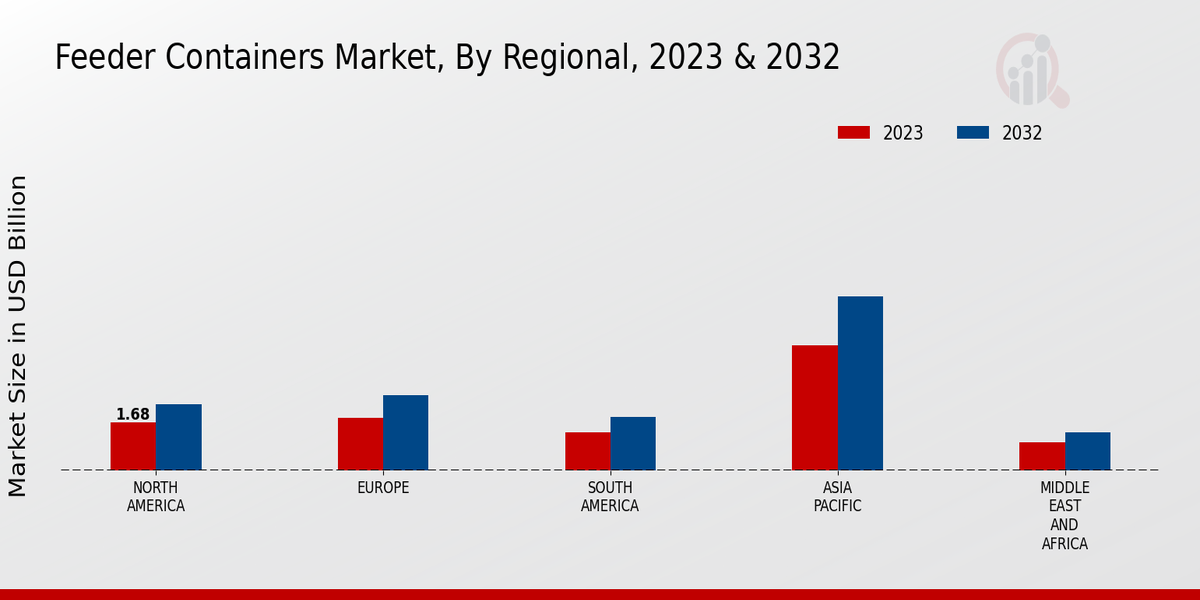Expansion of E-commerce and Retail Sectors
The expansion of e-commerce and retail sectors significantly influences the Global Feeder Containers Market Industry. As online shopping continues to gain traction, the demand for efficient logistics solutions becomes paramount. Feeder containers facilitate the movement of goods from distribution centers to local markets, ensuring timely delivery to consumers. This trend is expected to contribute to the market's growth, with projections indicating a rise to 16.6 USD Billion by 2035. The increasing volume of e-commerce transactions necessitates innovative shipping methods, positioning feeder containers as a vital component in meeting consumer expectations for rapid fulfillment.
Growth of Global Trade and Economic Recovery
The growth of global trade and economic recovery serves as a vital driver for the Global Feeder Containers Market Industry. As economies rebound and international trade volumes increase, the need for efficient shipping solutions becomes more pronounced. Feeder containers facilitate the movement of goods across various trade routes, enhancing connectivity between major ports and smaller terminals. This trend is expected to bolster market growth, with the industry poised to reach a valuation of 11.0 USD Billion in 2024. The resurgence of global trade underscores the importance of feeder containers in supporting the logistics infrastructure necessary for thriving economies.
Technological Advancements in Container Design
Technological advancements in container design play a crucial role in shaping the Global Feeder Containers Market Industry. Innovations such as lightweight materials and enhanced durability improve the performance and lifespan of feeder containers. These developments not only reduce operational costs but also contribute to sustainability efforts by minimizing fuel consumption during transportation. As companies prioritize eco-friendly practices, the adoption of advanced feeder containers is likely to increase. This trend aligns with the projected compound annual growth rate of 3.81% from 2025 to 2035, indicating a robust future for the industry as it adapts to evolving market demands.
Regulatory Support for Sustainable Shipping Practices
Regulatory support for sustainable shipping practices significantly impacts the Global Feeder Containers Market Industry. Governments worldwide are implementing stricter environmental regulations aimed at reducing carbon emissions from the shipping sector. This regulatory landscape encourages the adoption of feeder containers, which are often designed with sustainability in mind. By promoting the use of eco-friendly materials and efficient logistics solutions, these regulations foster a favorable environment for the growth of the feeder container market. As companies strive to comply with these standards, the demand for innovative and sustainable feeder containers is expected to rise, further driving industry expansion.
Increasing Demand for Efficient Transportation Solutions
The Global Feeder Containers Market Industry experiences heightened demand for efficient transportation solutions, driven by the need for streamlined logistics and reduced shipping times. As global trade continues to expand, companies seek to optimize their supply chains, leading to a greater reliance on feeder containers. This trend is evidenced by the projected market value of 11.0 USD Billion in 2024, reflecting a growing recognition of the advantages feeder containers offer in terms of flexibility and cost-effectiveness. The ability to transport goods seamlessly between larger vessels and smaller ports enhances operational efficiency, thereby supporting the overall growth of the industry.

















Leave a Comment